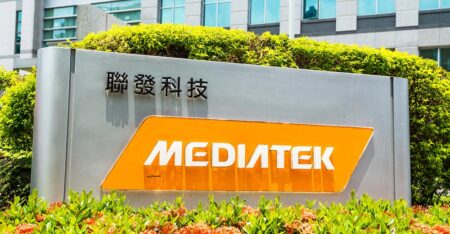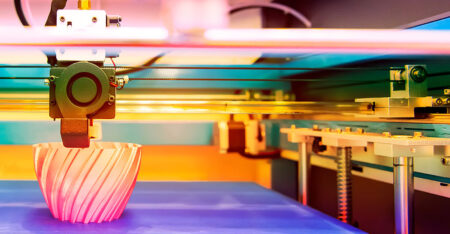Move over Google Assistant, Alexa, and Siri. There’s a new digital assistant in town, although you need to be a facilities manager to appreciate it.
On Tuesday, BrainBox AI, the maker of an AI-powered facilities management solution, announced a virtual building assistant called ARIA (Artificial Responsive Intelligent Assistant).
Powered by AWS Bedrock, ARIA is designed to enhance building efficiency by assimilating seamlessly into the day-to-day processes related to building management, explained the company, which is located in Montreal.
It noted that ARIA, created for commercial and retail spaces, is equipped with the predictive ability to circumvent operational problems while maintaining a watchful eye over a building’s blind spots.
“We took an autonomous AI agent and plugged it into our existing technology stack, which already had predictive capabilities,” BrainBox AI Cofounder and Chief Technology Officer Jean-Simon Venne said.
“So, it will not only tell you what’s been happening over the last year, and here’s what’s happening now, but here’s what’s going to be happening in the next few months,” he told TechNewsWorld. “Then it will make some recommendations on what you should do to face that immediate future.”
“It’s sort of an ultimate advisor,” he added, “telling you what to do to deal with situations on the horizon.”
Morale Booster
According to BrainBox, the combination of its core AI for HVAC technology and ARIA can make a significant impact on building operations management, reducing HVAC energy costs by up to 25% and greenhouse gas emissions by up to 40%.
ARIA can also impact the morale of facility managers. “Building and facility managers have such a long list of to-do’s [that] they’re always frustrated,” Venne explained. “By the time their shift is over, they only have time to do 20% of their list. They feel they’re failing because there are too many things to do.”
“With ARIA, you have an assistant that allows you to do a lot of the work quicker,” he said. “You have a chance to get a good chunk of that to-do list done, while before, it was just impossible.”
BrainBox noted that ARIA is designed to give facility managers a 360-degree view of a building’s data, zeroing in specifically on its systems and components to make accurate and holistically informed recommendations for strategic decision-making.
Ingrained in ARIA’s design is two-way interaction, the company continued. Not only are facility managers and building operators prompted to carry out specific tasks, but they’re also informed about future actions that can lead to the most efficient and effective management of their building.
Clients can “call” on ARIA via text or voice and seamlessly take their interactions from desktop to mobile without skipping a beat, the company boasted.
What’s more, it added, ARIA’s generative AI engine works 24/7 to help clients prioritize and optimize their buildings — a feature that transforms building management from reactive to proactive, increases its value and directly contributes to an organization’s sustainability efforts.
The following video displays ARIA’s use cases, demonstrating its capacity to enhance efficiency, reduce energy costs, and improve operational workflows in commercial and retail spaces.
Avoiding AI Hallucinations
A concern often raised about generative AI tools is that they can “hallucinate” or produce answers to queries that sound good but are inaccurate or even wacky. There are a few reasons for that behavior.
For example, while large language models (LLMs) are good at mimicking language patterns, they don’t truly understand the meaning of the text they process. This limitation can lead to them generating text that is grammatically correct but factually incorrect or nonsensical.
The way an LLM chooses which words to generate next can also influence hallucinations. Some techniques prioritize fluency over accuracy, which can lead to creative but unreal outputs.
In addition, some LLMs are trained on massive amounts of data scraped from the internet. That data can contain factual errors, biases, and just plain weird stuff. The model can pick up on these patterns and generate outputs that reflect them, even if they aren’t accurate.
BrainBox avoids the hallucination problem by restricting what and how ARIA uses data. “Gen AI is an empty bucket,” Venne explained. “You need to plug it into a data sandbox. Then it can create something interesting.”
“We’re plugging it into our existing tech stack, which has HVAC and other kinds of information in it for a building,” he said. “We built ARIA on top of the stack where it has access to that ocean of information and can analyze data trends.”
“The sandbox for AI is limited to our data set,” he continued. “You could ask it, ‘Why did Napoleon lose the battle of Waterloo?’ but the response would be something like ‘Can we talk about your building portfolio? I’m not a historian.’”
Built on Bedrock
Venne noted that data translation has been one of the most challenging problems BrainBox has faced in developing its AI-powered solution over the last six years.
“When you plug yourself into these systems, you rarely get a perfect data set,” he said. “You can have sensors giving you false readings. You can have gaps — a thermostat not giving you any readings for an hour. So we had to be able to extract clean data and make corrections in the data when it’s faulty.”
“Once you have a super-structured set of clean data, using tools like generative AI is much easier,” he continued. “We trained our AI only on data that we have full control over. We validate it, and we know it’s accurate.”
A key building block of ARIA is AWS Bedrock. “Bedrock gives us the opportunity to stay super flexible without having to commit to a technology decision that we might get stuck in in six months,” Venne explained.
“Amazon Bedrock makes it easier for applications to leverage high-performing foundation models from leading AI companies like Anthropic, Meta, Mistral, and others, via a single API call — all in one secure, fully-managed service,” said AWS Vice President and Global Head of Startups Howard Wright.
“Amazon Bedrock empowers applications like ARIA to be the most sophisticated and intelligent building manager assistant it can be, leveraging insights from multiple models and selecting the ones that are most appropriate for a specific use case or task,” Wright told TechNewsWorld.
He explained that Amazon Bedrock takes the complexity out of building and scaling generative AI applications with foundation models.
“Startups can quickly experiment with and evaluate top foundation models for specific use cases — from Claude 3 to Llama 2,” he noted. “From there, they can privately customize them with the startup’s own data using techniques such as fine-tuning and retrieval-augmented generation [RAG] and build agents that execute tasks using the startup’s enterprise systems and data sources.”
“With buildings being responsible for almost 40% of greenhouse gas emissions globally and 27% of those emissions coming from the energy used to heat, cool, and power them, and the global stock of buildings expected to double by 2050, the challenge of heightening building sustainability isn’t just necessary — it’s urgent,” Wright added.
“BrainBox AI is solving precisely this, using AI-driven technology trained on Amazon Bedrock to rethink energy systems and mitigate the impacts of the climate crisis.”
Read the full article here











